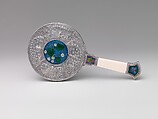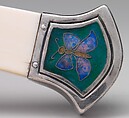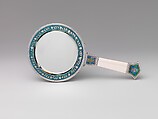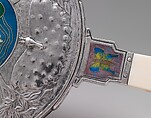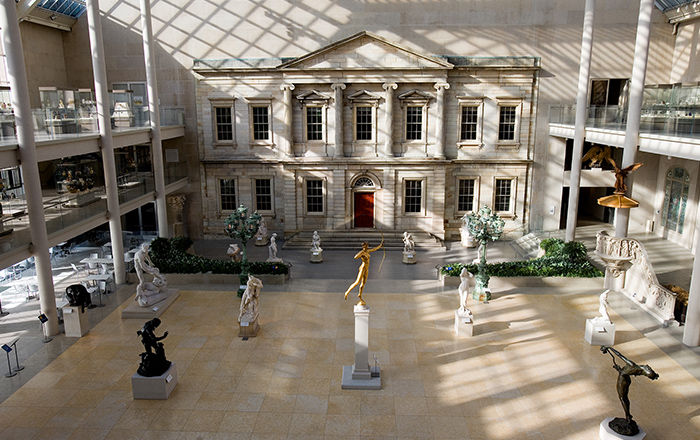Hand mirror
Eda Lord Dixon American
This hand mirror showcases the masterful skills and inventive vision of Eda Lord Dixon, a leading Arts and Crafts enamellist, silversmith, and jeweler, little known today because she rarely marked her work. Trained by the British enamellist Alexander Fisher and the Chicago jeweler James Winn, Dixon achieved considerable success and renown, showing and selling her work through Arts and Crafts exhibitions and societies across the country. Created early in her career, this mirror is a masterpiece that Dixon repeatedly chose to represent her prodigious talent and artistry. She exhibited it in 1908 at the Art Institute of Chicago as well as in 1915 at the Panama-California Exposition; it was also featured in the April 1915 issue of the magazine, House Beautiful. The conventionalized decoration depicting lily pads, butterflies, and peacocks reflects Arts and Crafts design principles and prevailing interest in reviving medieval enameling techniques. The mirror also demonstrates the range of her skills, employing both cloisonné and champlevé enamels. Surviving sketches reveal that Dixon was inspired by a fifteenth-century "Saracenic" mirror in the South Kensington Museum (now the Victoria and Albert Museum)—a work she used as a point of departure for an entirely original composition.
Her sketchbooks, ledgers, and photograph albums have been digitized and are available through Watson Library’s digital collections.
Click here for more on Eda Lord Dixon.
This image cannot be enlarged, viewed at full screen, or downloaded.
This artwork is meant to be viewed from right to left. Scroll left to view more.
